Photo review of the MR headset 'Meta Quest 3S' that can be purchased from the 40,000 yen range, what has changed from Quest 3?

Meta's standalone MR (mixed reality) headset ' Meta Quest 3S ' will be released on Tuesday, October 15, 2024. The Quest 3S is a device positioned as a cheaper version of
Meta Quest 3S: Pre-order the latest mixed reality headset | Meta Store
https://www.meta.com/jp/quest/quest-3s/
The Quest 3S package looks like this. The model I borrowed this time was the 256GB model.
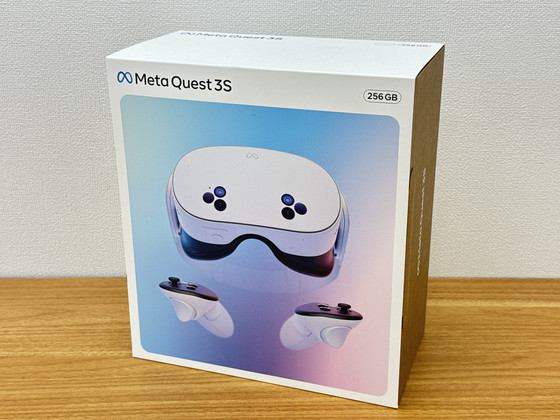
Open the inner box.
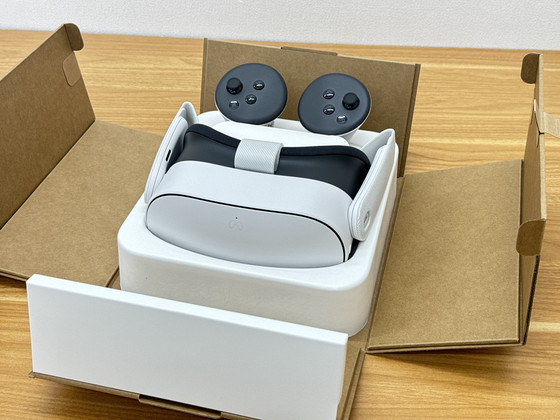
Contents include the Quest 3S headset, Meta Quest Touch Plus controller, glasses spacer, USB-C power adapter, and USB cable (1m).

The headset seen from the front. The Meta logo is engraved at the top center, and there are cameras and sensors on the left and right at the bottom.
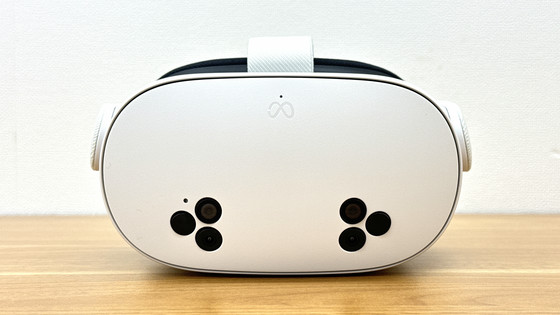
Here's a closer look at the camera and sensor.
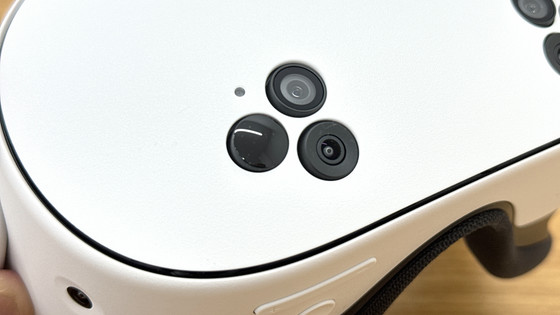
Right side. The black dot at the bottom of the goggles is the camera.
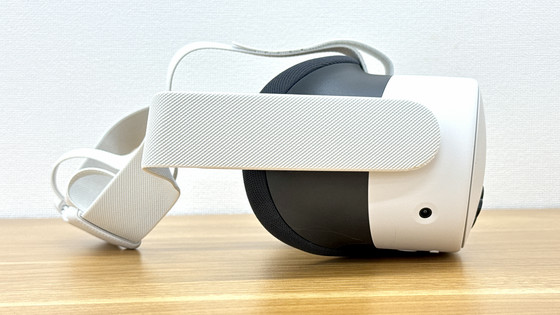
On the left side is the power button and camera, and at the base of the strap is the USB-C port.
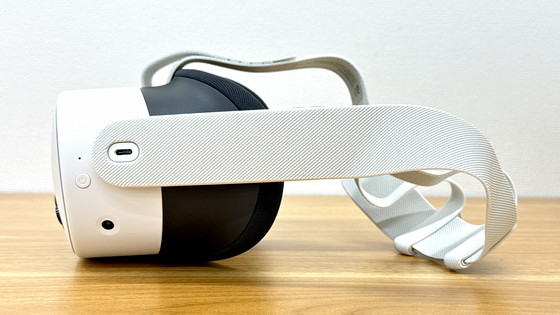
The strap has a built-in speaker. The FCC ID and serial number were written on the inside of the left strap.
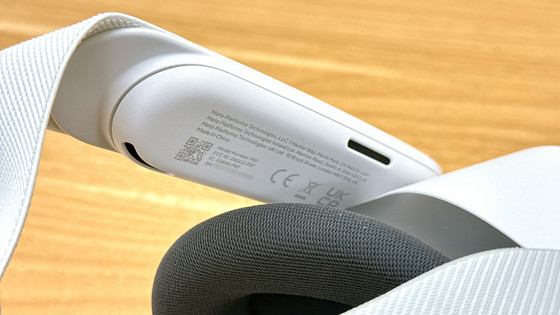
There are no buttons or sensors on the top, and the band that secures it to your head is made of rubber.

There are volume control buttons and action buttons on the bottom.
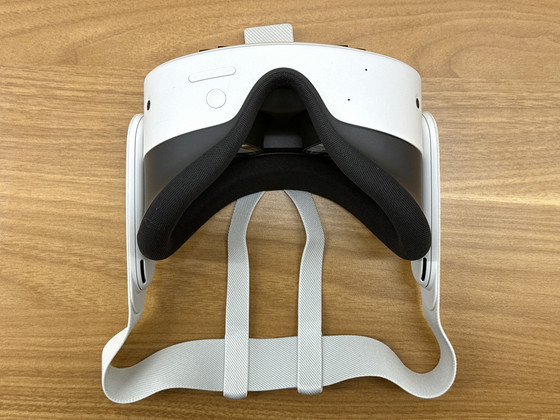
The eyepiece was removed to reveal the inner lens.
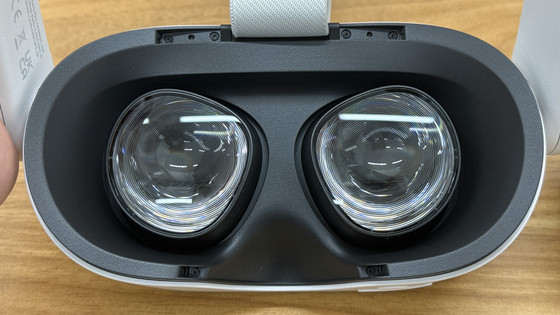
The Quest 3 had a pancake lens, but the Quest 3S uses the same Fresnel lens as the Quest 2. When you look through the lens, you can see concentric grooves.
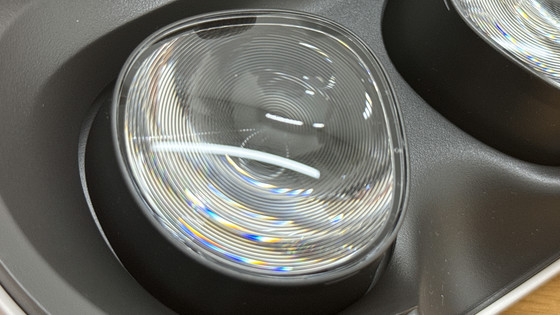
In addition, the Quest 3S has three levels of interpupillary distance (IPD) adjustment, which can be adjusted by moving the lenses directly with your fingers.

The included USB-C power adapter was 18W, with an input of 100-240V/0.5A and an output of 5.0V = 3.0A/9.0V = 2.0A.
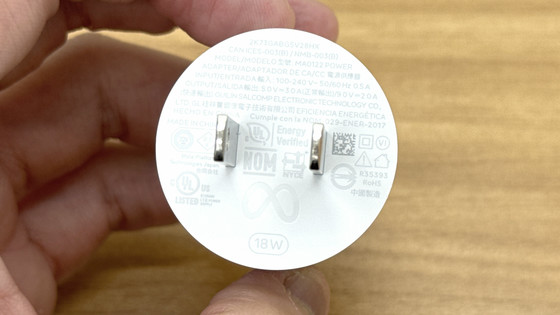
The Meta Quest Touch Plus controller is the same one that came with the Quest 3.
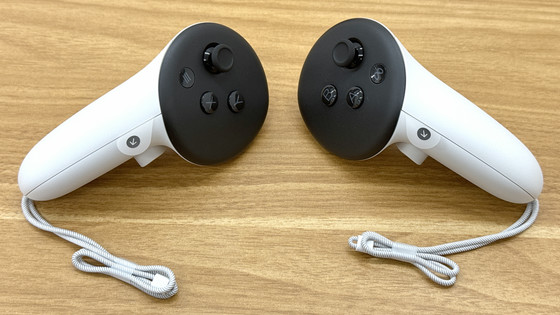
I lined up the Quest 2, Quest 3, and Quest 3S and took a photo of the front. In the photos that follow, the devices are arranged from left to right in the order of Quest 2, Quest 3, and Quest 3S.
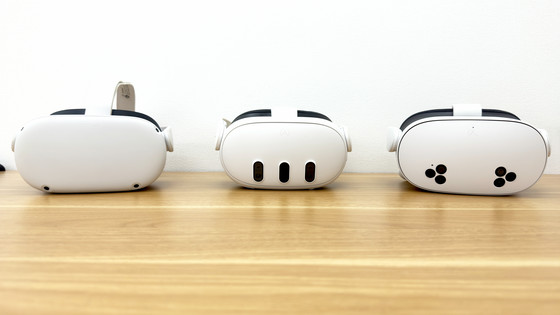
Viewed from above, the Quest 3 has the thinnest visor.

Even when viewed from the side, the difference in the thickness of the visor is noticeable. The Quest 3S is right in between the Quest 2 and Quest 3.
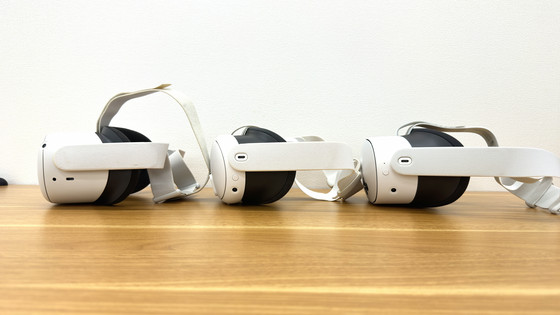
I removed the eyepiece and compared the lens parts side by side. The Fresnel lens and three-level IPD manual adjustment used in the Quest 3S are the same as those in the Quest 2.

The Fresnel lens of the Quest 3S seen from the side. The lens appears to be slightly raised.
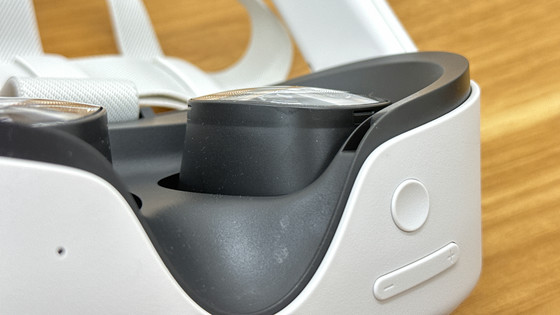
On the other hand, the Quest 3's lenses are thin and don't stick out when viewed from the side.
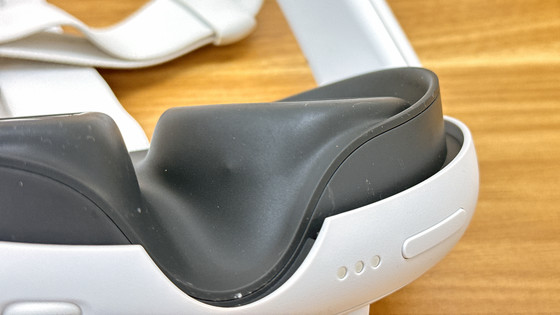
Comparing the eyepieces. Unlike the Quest 3's eyepiece, which has a built-in slide that allows you to adjust the depth, the Quest 2 and Quest 3S have a simple and fairly similar design. However, the Quest 3S has more depth because the visor is thinner, and the cushioning material used in the eyepiece of the Quest 3S is the same as that of the Quest 3.

The actual weight of the Quest 3S headset is 511g.
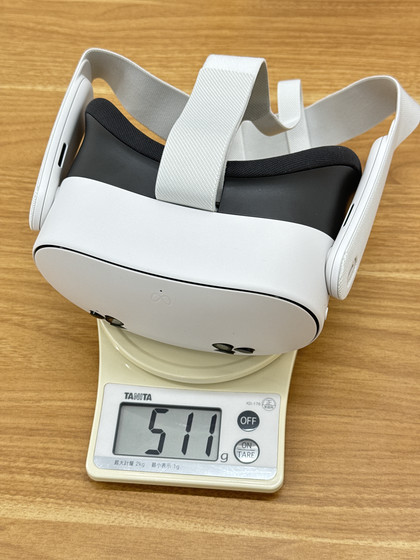
The Quest 3 weighs almost the same at 514g.
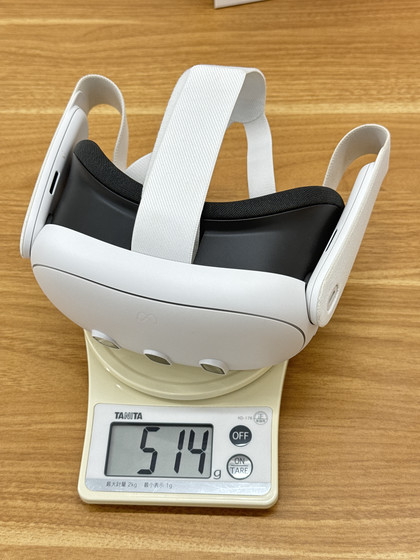
The Quest 2 weighed 481g.
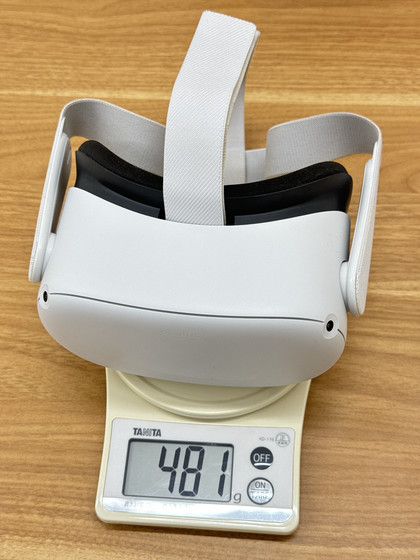
When I actually tried wearing them, I got the impression that the weight and center of gravity felt on my head was almost the same between the Quest 3 and Quest 3S.
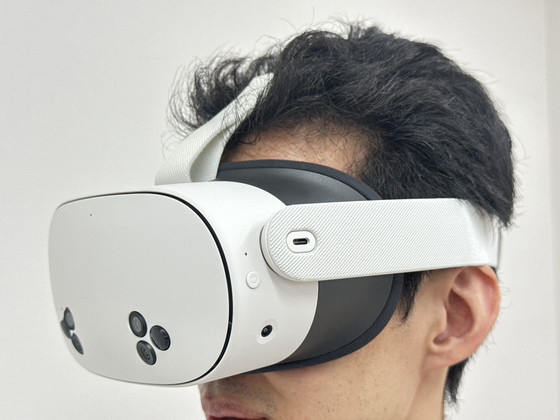
Next time, we'll check how the optical performance of the Quest 3S differs from that of the Quest 3 by actually using it.
The Quest 3S will be released on Tuesday, October 15, 2024, with the price being 48,400 yen including tax for the 128GB model and 64,900 yen including tax for the 256GB model. In addition to the Meta official website , pre-orders can also be made from the following pages on Amazon.co.jp at the time of writing.
Amazon.co.jp: Meta Quest 3S 128GB | Jump into the world of mixed reality | Unbelievable experience | All-in-one MR/VR headset: NA: Games
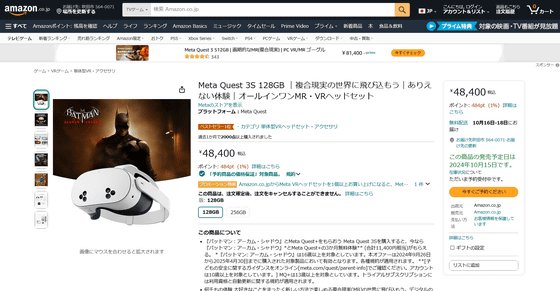
Amazon.co.jp: Meta Quest 3S 256GB | Jump into the world of mixed reality | Unbelievable experiences | All-in-one MR/VR headset: Games
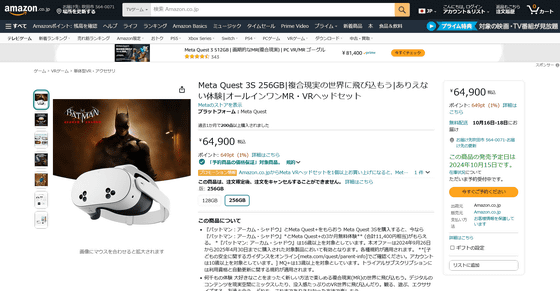
Related Posts:







